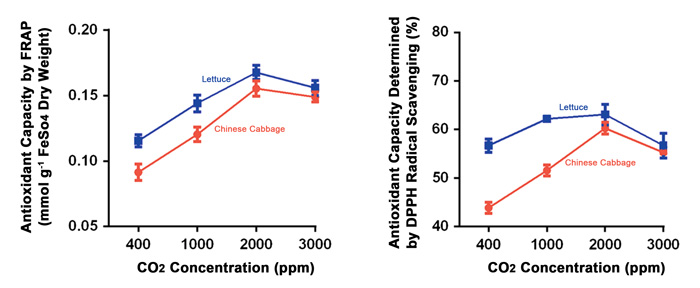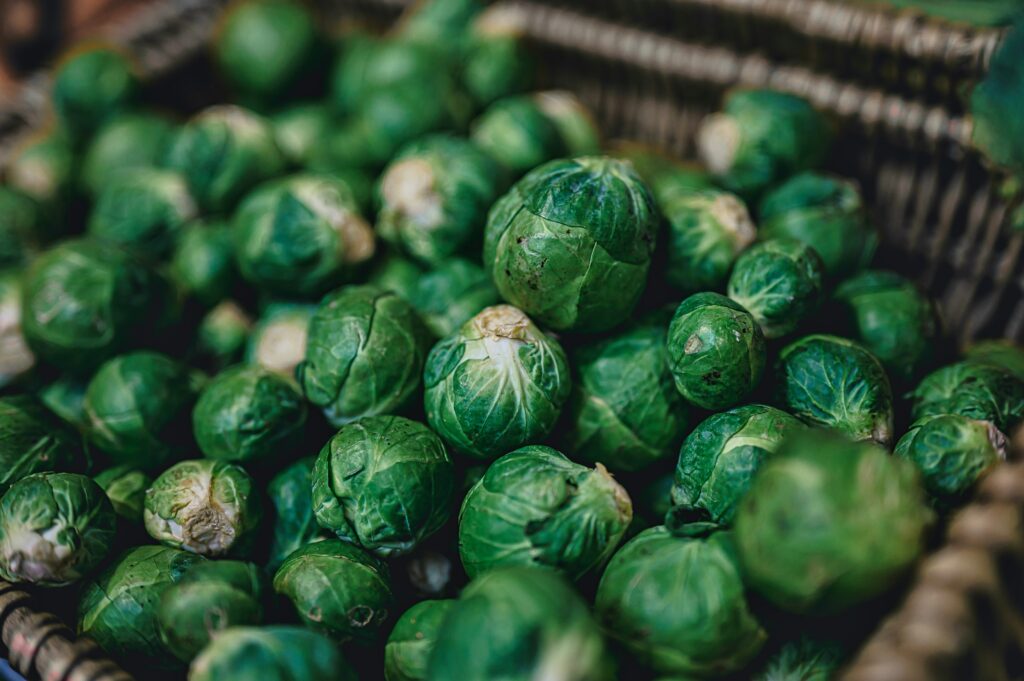From the CO2Science Archive: Recognizing that “more CO2 is beneficial to plant growth because plants feed on CO2,” Fu et al. (2015) say they “tested the effect of CO2 levels from 400 to 5,000 ppm on the yield and antioxidant capacity of Chinese cabbage, Brassica chinensis, and lettuce, Lactuca sativa.” In doing so, they grew the plants hydroponically in half-strength Hoagland’s solution under high-pressure sodium lamps in growth chambers maintained at CO2 concentrations of 400 ppm (ambient) and 1,000, 2,000, 3,000 and 5,000 ppm (enriched) for 40 days, after which the plants’ shoot and root fresh weights were determined, along with their total antioxidant concentrations. And what did their study show?
Paper reviewed: Fu, Y., Shao, L., Liu, H., Li, H., Zhao, Z., Ye, P., Chen, P. and Liu, H. 2015. Unexpected decrease in yield and antioxidants in vegetable at very high CO2 levels. Environmental Chemistry Letters 13: 473-479.
This work revealed, as the eight Chinese scientists report, that “the best harvest biomass occurred at 2,000 [ppm] of CO2 for Chinese cabbage and 2000-3000 [ppm] CO2 for lettuce,” where the fresh weights of shoot and root biomass in Chinese cabbage were each increased by approximately 60 percent, whereas lettuce plants experiencd a larger 73 and 91 percent increase in shoot and root fresh weight, respectively. In addition, Fu et al. found that “the antioxidant components in both vegetables containing polyphenols, flavonoids and vitamin C were higher at CO2 ranging from 1,000 to 3,000 ppm than those at the ground level of CO2 [400 ppm] with the largest contents at 2,000 and/or 3,000 ppm CO2” (see figure below), which concentrations are fully 2.5 to 7.5 times greater than the atmospheric CO2 concentration of today. The much smaller rise of atmospheric CO2 that is predicted for the end of this century (approximately 700 ppm) will thus provide only a portion of the benefits that this magnificent molecule could bestow on these two plants were the concentration to rise even higher.

An evaluation of the total antioxidant capacity of Chinese cabbage and lettuce in response to the increase in CO2 concentration by using the FRAP assays (left panel) as well as measuring the clearance rate of DPPH free radicals (right panel). FRAP is the abbreviation of ferric ion reducing antioxidant potential, DPPH is the abbreviation of diphenyl-picryl-hydrazylhydrate. Adapted from Fu et al. (2015).



Does the planet respond to higher co² levels by increasing biomass and thus sequestering more carbon in the ground over time, completing the co² cycle? Perhaps we need to be thinking longer term regarding co² in the atmosphere. Not to mention the obvious free benefits on agricultural yield!
NuLeaf Farms in Calgary Alberta maintain CO2 in the 625 to 970 ppm range depending on the herbs, leavy vegetables etc. being grown.
The green house controls optimize the CO2, humidity, nutrients and temperature for maximum plant yields.